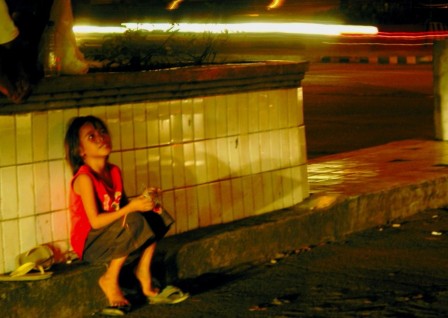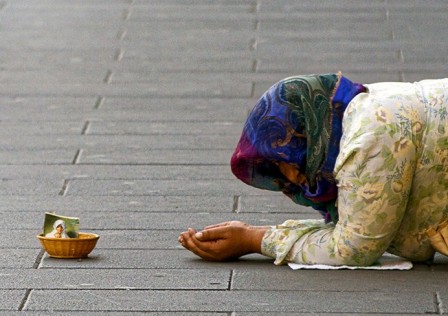Poverty: Half the World Lives on Less than $2.50 a Day
Almost half of the world-over 3 Billion people- has to survive with less than $2.50 per day. The current events unfolding in Thailand, India and Kyrgyzstan have a lot more to do with the problems of poverty and social injustice than conventional ideological issues.
In Thailand, the Red Shirts are the poor from the rural areas fighting for a small share of the pie controlled by the urban elites and the military. In India, the economic boom has left most Indians behind, and the Maoists movement is getting a popular boost because of it. If, as a global community, we do not seriously reconsider our model of development and urgently address the issues of poverty and social injustice, it is likely that the social unrest unfolding in Thailand, Kyrgyzstan and India will become more widespread. If anything can be learn from world history, it is that once a society has reached the breaking point where a very small percentage of the population control the wealth and most of the resources, the poor will eventually organize and revolt against the existing order. This was the case in France in 1789 when the revolution toppled the monarchy, and again in Russia in 1917 when the communist revolution took down the Czar.
To say that the facts and statistics on worldwide poverty are troubling is an understatement, as matter of fact they are overwhelming, and only getting worse on a daily basis. For instance, at least 80 percent of humanity lives on less than $10 a day, and more than 80 percent of the world’s population lives in countries where income differentials are widening. Not only the gap between rich industrialized nations and poor developing countries is growing, but income differentials are increasing within the boundaries of rich nations and poor nations alike. Globalization is having a negative impact on the poor in both the industrialized world and the developing one.
For example, the poorest 40 percent of the world’s population accounts for 5 percent of global income while the richest 20 percent accounts for 3/4 of world income. According to UNICEF, 24,000 children die each day due to poverty. Among the 2.2 Billion children worldwide an estimated 1 Billion live in poverty. There is currently 121 Million children with no access to education worldwide; and for the 1.9 Billion children from the developing world there are 640 Million without adequate shelter, 400 Million with no access to safe water, 270 Million without health care, and 121 Million children worldwide with no access to education.
Meanwhile, the total wealth of the top 8.3 Million people around the world is globally rising dramatically, effectively giving them control of nearly a quarter of the world’s financial assets. In other words, in 2004 about 0.13 percent of the world’s population controlled 25 percent of the world’s wealth. If we consider the global spending priorities of 1998, the trends were already extremely alarming.
In 1998, $8 Billion were spent to buy cosmetic products in the United States, $11 Billion to buy ice cream in Europe, $12 Billion to buy perfumes in Europe and the United States, $17 Billion for pet foods in Europe and the US combined, $ 50 Billion to buy cigarettes in Europe, $105 Billion to buy alcoholic drinks in Europe, $400 Billion to buy narcotic drugs worldwide, and $780 Billion were spent in military expenditure globally. In comparison, according to Anup Shah from Global Issues.org, the cost to achieve universal access to basic social services in all developing countries would be as followed: $ 6 Billion to provide basic education for all, $ 9 Billion to bring everyone water and sanitation, $ 12 Billion to provide reproductive health care for all women, and $13 Billion for basic health care and nutrition.
Our current form of globalization has not leveled the social playing field whatsoever, but has instead increased the unsustainable gap between the rich and the poor. According to the new economic data for March, American consumers are spending again, they are back in the shopping malls and buying durable goods, which could indicate that the worse of the recession is over. While this is good for Wall Street, which has regained all of its losses from the crash of 2008, it is not necessary good news for our society as a whole. The global financial collapse was a unique opportunity in America and elsewhere to adjust our mode of economic development and make it more sustainable. Unfortunately, because of a general lack of political vision and will from our governments, the process of re-thinking capitalism to finally address the issues of poverty and social justice in the context of globalization never really took place.
Editor’s Note: Please follow Gilbert Mercier on Twitter and The News Junkie Post to stay updated on all of our articles.
Related Articles
14 Responses to Poverty: Half the World Lives on Less than $2.50 a Day
You must be logged in to post a comment Login

















Pingback: === popurls.com === popular today